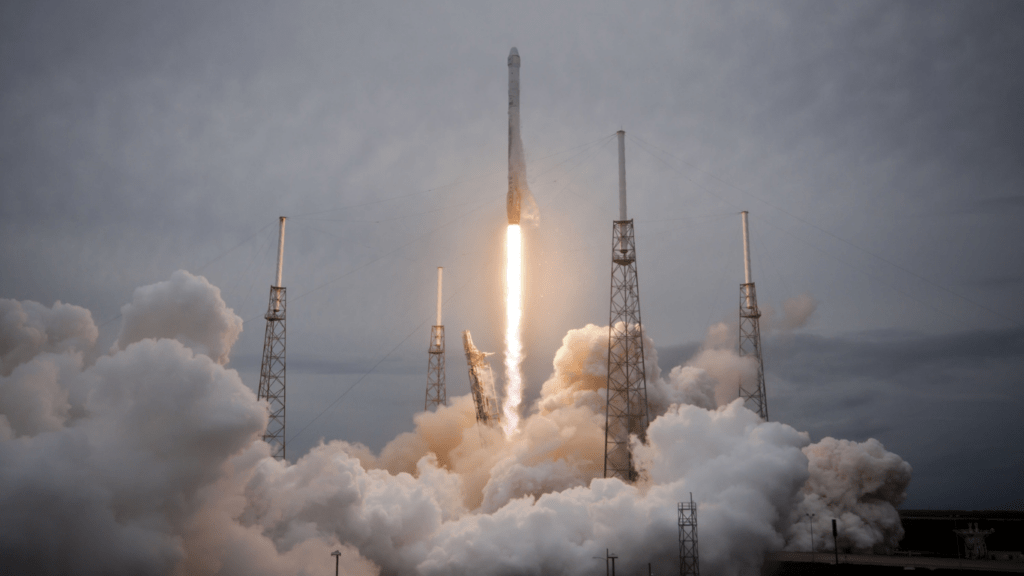The Current State of Space Exploration
Space exploration has advanced significantly, with NASA and its partners continuing to push boundaries. Technological innovations enable missions once thought impossible.
NASA’s Current Missions
NASA’s current missions include the Artemis program, the Mars 2020 Perseverance rover, and the James Webb Space Telescope. The Artemis program aims to return humans to the moon by 2024, establishing a sustainable human presence by the end of the decade. The Mars 2020 mission, with the Perseverance rover, focuses on searching for signs of past life and collecting rock samples for future return to Earth. The James Webb Space Telescope, launched in 2021, aims to explore the universe’s earliest galaxies, deepening our understanding of cosmic evolution.
International Collaboration
International collaboration plays a crucial role in current space exploration efforts. Agencies like the European Space Agency (ESA), Roscosmos, and the China National Space Administration (CNSA) partner with NASA and private entities. The International Space Station (ISS) is a prime example, with contributions from NASA, ESA, Roscosmos, JAXA, and CSA. Additionally, the Lunar Gateway project involves ESA, JAXA, and CSA working with NASA to create a lunar outpost facilitating future moon and Mars missions.
These initiatives highlight our collective drive to explore the cosmos, leveraging global partnerships and cutting-edge technology.
Upcoming Missions and Innovations
Space exploration pushes boundaries, and upcoming missions are set to expand our understanding of the universe. Here’s a look at what’s on the horizon:
Artemis Program
NASA’s Artemis program, aiming to return humans to the moon by 2024, marks a critical step in space exploration. This mission plans to establish sustainable exploration by collaborating with international and commercial partners. Lunar Gateway, a space station orbiting the moon, will support long-term missions and serve as a staging post for Mars.
Mars Missions
Mars remains a focal point, with several missions slated for the coming decade. The Mars 2020 Perseverance rover, launched to detect signs of ancient life, collects samples to be returned to Earth by future missions. Plans for manned missions to Mars, supported by advancements in habitat technology and life support systems, aim to make humanity’s interplanetary travel a reality.
Space Telescopes
Space telescopes continue to revolutionize our understanding of the cosmos. The James Webb Space Telescope, scheduled to launch soon, will explore the universe’s first galaxies and study exoplanets’ atmospheres, searching for conditions conducive to life. The Roman Space Telescope, planned for the mid-2020s, will focus on dark energy and exoplanet exploration, broadening the scope of astronomical research.
Private Sector Contributions

Private companies are revolutionizing space exploration, bringing innovative solutions and significant investments. Let’s explore their contributions in detail.
SpaceX
SpaceX stands at the forefront of private sector contributions to space exploration. Founded by Elon Musk, SpaceX has developed the Falcon and Starship rockets, both known for their reusability. In May 2020, SpaceX’s Crew Dragon spacecraft carried astronauts to the International Space Station, marking the first private company to achieve this milestone. Their ambitious Starship project aims to enable human missions to Mars, with test flights already showing significant progress.
Blue Origin
Blue Origin, founded by Jeff Bezos, focuses on increasing access to space through reusable launch vehicles. Their New Shepard rocket is designed for suborbital flights, making space tourism more attainable. Blue Origin’s New Glenn, a heavy-lift orbital rocket, is expected to compete with SpaceX’s Falcon Heavy. The company’s long-term vision includes establishing sustainable human habitats in space, emphasizing the importance of reducing launch costs through reusability.
Other Emerging Players
Several other private companies are making notable strides in space exploration. Rocket Lab, with its Electron rocket, specializes in delivering small satellites to space efficiently. Sierra Nevada Corporation is developing the Dream Chaser spaceplane for cargo missions to the International Space Station. Companies like Relativity Space and OneWeb are innovating in rocket manufacturing and global satellite internet deployment, respectively. These emerging players are diversifying the space industry, making it more competitive and leading to rapid technological advancements.
Challenges and Considerations
Space exploration faces numerous hurdles. These challenges impact progress and influence future strategies.
Technical Obstacles
NASA and private companies often encounter technical challenges. Developing reliable spacecraft systems for deep space missions poses significant risks. The harsh environment of space requires robust designs that can withstand radiation, extreme temperatures, and microgravity. For instance, the Artemis mission involves building the Space Launch System (SLS), one of the most powerful rockets ever constructed. Each component, from propulsion to life support, must work flawlessly to ensure mission success.
Budget and Funding
Funding remains a constant challenge. Space missions demand substantial financial resources, often requiring governmental allocations or private investments. For example, the Artemis program has an estimated cost of $35 billion through 2024. Securing consistent funding is crucial for long-term projects like the Lunar Gateway and Mars exploration. Without adequate financial support, ambitious plans stall.
Ethical and Environmental Concerns
- Space exploration also raises ethical and environmental questions.
- There are concerns about space debris, which can damage satellites and endanger missions.
- NASA and other agencies are working on measures to mitigate debris through better design and active debris removal systems.
- Ethical considerations, such as planetary protection and the potential exploitation of celestial bodies, require careful regulation.
- Ensuring responsible exploration practices is vital for the future of space exploration.
The Future of Space Colonization
Exploring space colonization is fascinating. Future efforts will likely focus on moon bases, Mars colonies, and destinations beyond our solar system.
Moon Bases
NASA’s Artemis program aims to establish a permanent human presence on the moon by 2028. Artemis will set up a base camp at the lunar South Pole. This location offers constant sunlight and potential water ice resources. Plans include:
- habitats
- power systems
- research facilities
International partners like ESA and JAXA contribute to these efforts, providing technology and expertise.
Mars Colonies
Mars colonization plans include both public and private sectors. NASA’s goal is to send astronauts to Mars in the 2030s. The Mars 2020 Perseverance rover is already paving the way by analyzing the planet’s surface and collecting samples. Elon Musk’s SpaceX envisions a self-sustaining city on Mars, using Starship spacecraft for transportation. Challenges include radiation protection and life support systems, which ongoing research aims to address.
Beyond Our Solar System
Long-term space colonization goals extend beyond our solar system. The Breakthrough Starshot initiative, for example, plans to send small, light-powered spacecraft to Alpha Centauri, our closest star system. Interstellar travel involves significant technological hurdles like propulsion systems and human sustainability over centuries-long journeys. Advanced space telescopes and missions will continue to identify potentially habitable exoplanets, guiding future colonization efforts.


 Patience Degarmonic was instrumental in building the community and health sections of News Flip Network, bringing a fresh perspective to the platform. Her focus on wellness content, along with her efforts in curating relevant and insightful articles, added depth to the site’s offerings. Degarmonic’s contributions ensured that readers not only stay informed about current events but also gain valuable tips for leading balanced and healthy lives.
Patience Degarmonic was instrumental in building the community and health sections of News Flip Network, bringing a fresh perspective to the platform. Her focus on wellness content, along with her efforts in curating relevant and insightful articles, added depth to the site’s offerings. Degarmonic’s contributions ensured that readers not only stay informed about current events but also gain valuable tips for leading balanced and healthy lives.